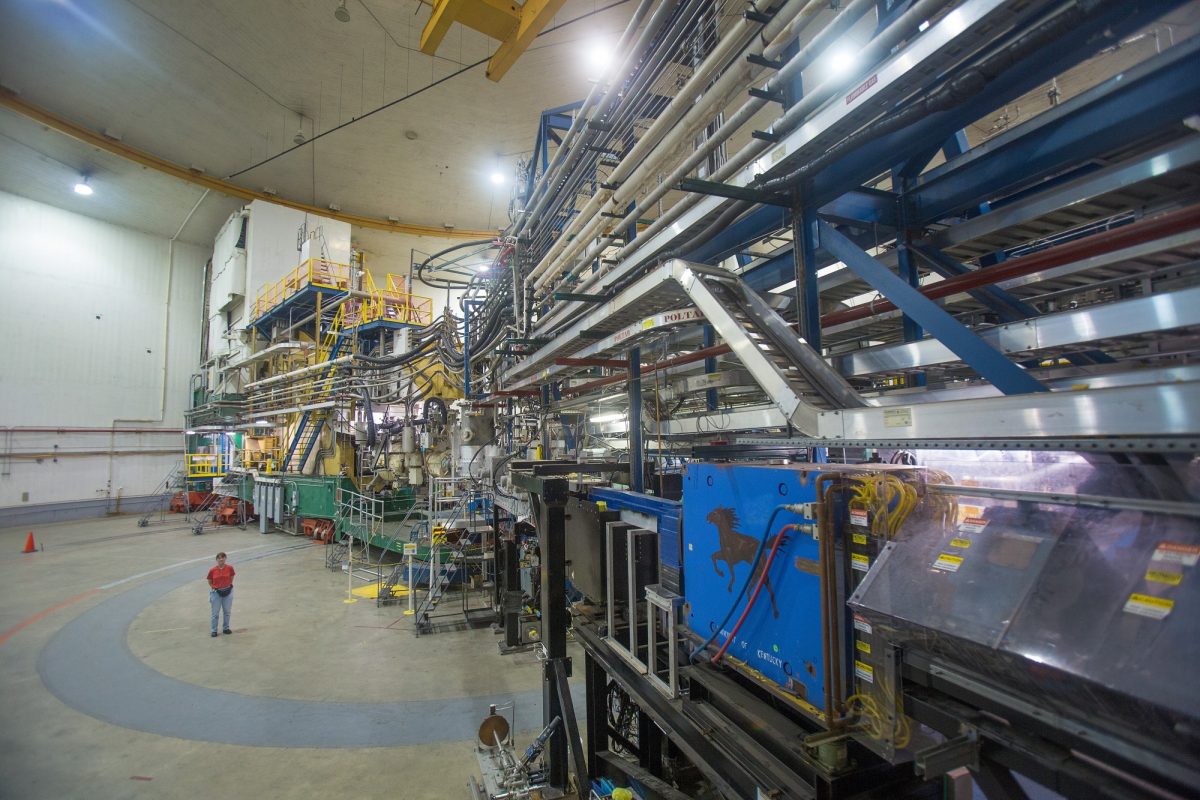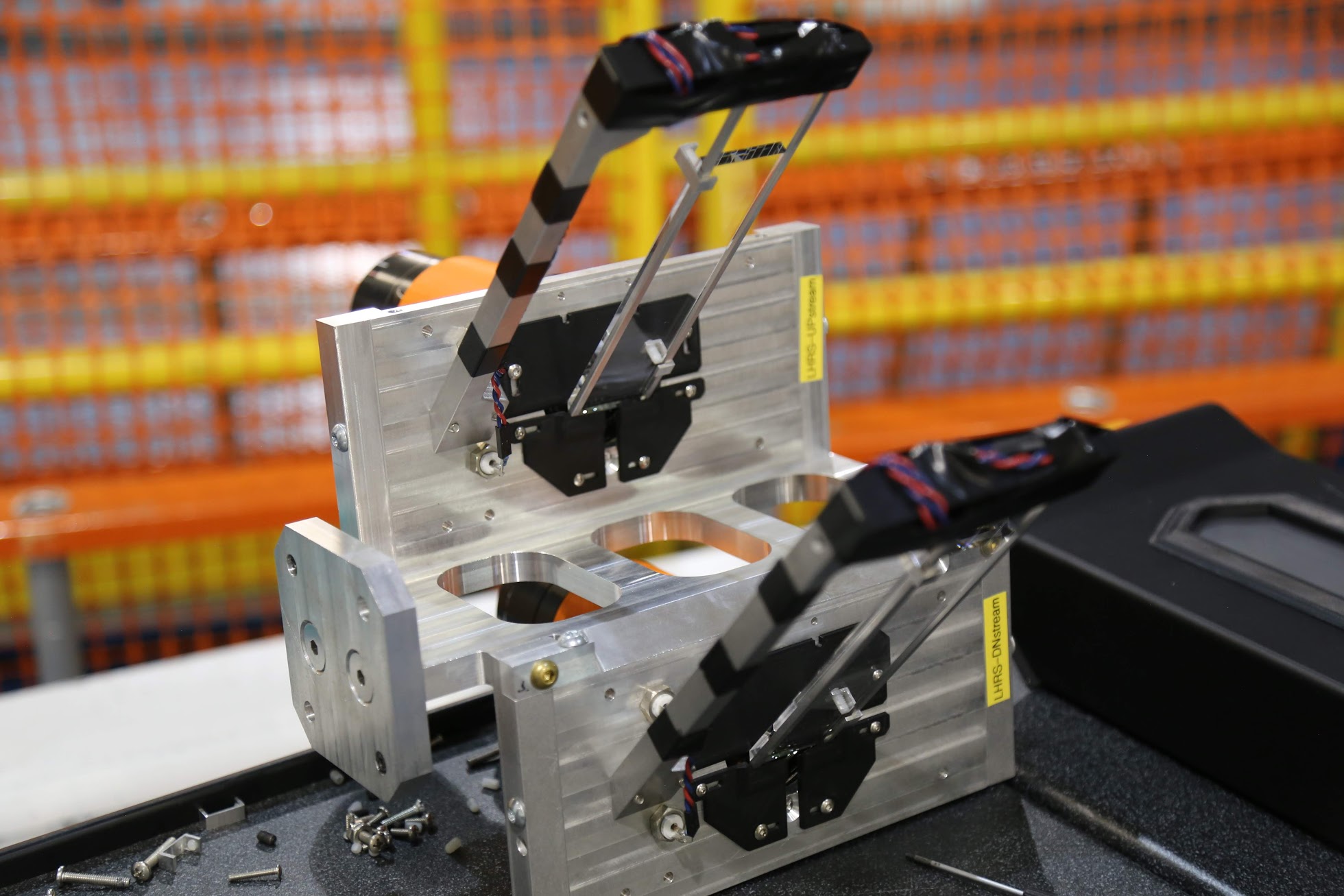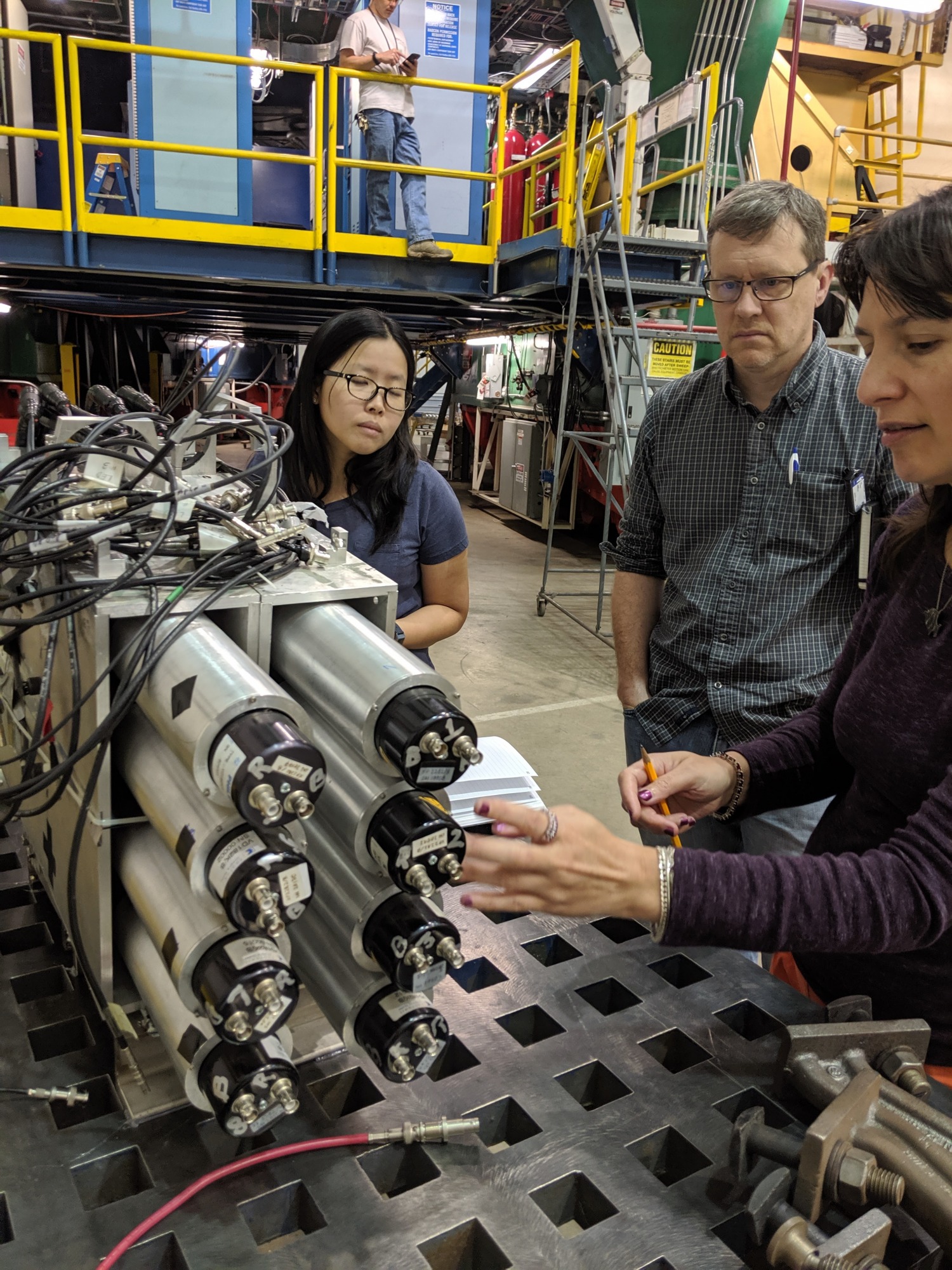
Photo credit. Kent Paschke. Jefferson Lab. Hall A.
Physicists suggest Neutron stars should be bigger than they are
UM physicists Drs. Juliette Mammei and Micheal Gericke are part of an international research experiment that has made the most precise measurement yet of the neutron distribution in a heavy nucleus, with implications for the structure of neutron stars. Their paper, Accurate Determination of the Neutron Skin Thickness of 208Pb through Parity-Violation in Electron Scattering has just been published in the Physical Review Letters.
The Lead Radius Experiment (PREX) Collaboration at the Thomas Jefferson National Accelerator Facility in Virginia has determined the thickness of this neutron-rich skin in lead-208, a stable isotope with 44 more neutrons than protons. The measurement, which addresses questions relating to all four fundamental forces of nature, yields insight into the structure of neutron stars, the densest objects in our universe besides black holes.
Neutron stars are the collapsed cores of dead stars; they are so dense that experts aren’t quite sure what lies at their core. It’s been suggested that they may be the source of axions, a candidate to explain dark matter.
Mammei explains, sometimes, examining the microscopic behaviors of subatomic particles can tell you more about the forces that act at a cosmic scale, than peering at a star through a telescope.
“We can learn about neutron stars, which are more than 15 orders of magnitude larger and more massive than earth-bound nuclei, by measuring how much the neutrons in a pure isotope of lead stick out from the protons.”

The primary detector elements for the PREX-2 experiment, with the light-tight covers, removed. The transparent quartz crystals (mounted on thin rails, at an angle to the thick aluminum frame) collect light from the passage of more than 2 billion high-energy electrons per second.
“We use a technique called parity-violating electron scattering because the weak charge of the proton is close to zero, but that of the neutron is large. This allows us to make a measurement of the energy cost in having unequal numbers of neutrons and protons, which in turn tells us about the equation of the state of neutron matter.
This will help in determining the phase diagram of nuclear matter, much like the phase diagram for water, which at different temperatures and pressures can be water, ice, or steam. Only in this case, it can help determine if the neutrons in a neutron star stay together as neutrons or have a phase change to quark matter, explains Mammei”

PREX-2 collaborators Sanghwa Park, Kent Paschke, and Simona Malace discuss improvements to a detector.
Another benefit, says Mammei, is that the PREX experiment also provides a valuable opportunity to study the upgraded accelerator in preparation for the future MOLLER experiment, a bold project that will peer inside fundamental particles, called Measurement Of a Lepton Lepton Electroweak Reaction (MOLLER).
Gericke, Mammei, and co-investigator Wouter Deconinck have received $2.3M in funding from the Canada Foundations for Innovation (CFI) for this upcoming experiment. They aim to measure the interaction properties between pairs of leptons (specifically electrons) down to separation distances of a zeptometer – which is roughly a million times smaller than the size of the smallest atomic nucleus – with unprecedented accuracy.

Juliette Mammei

Michael Gericke






